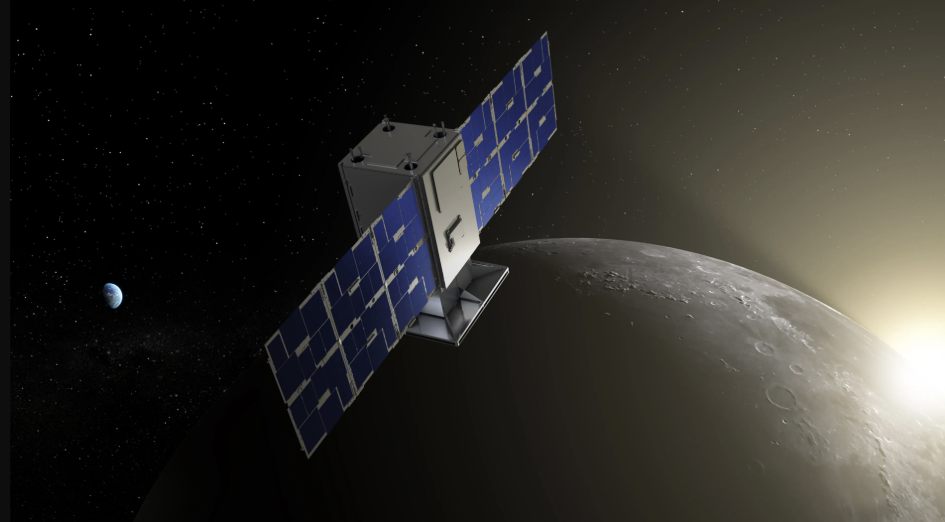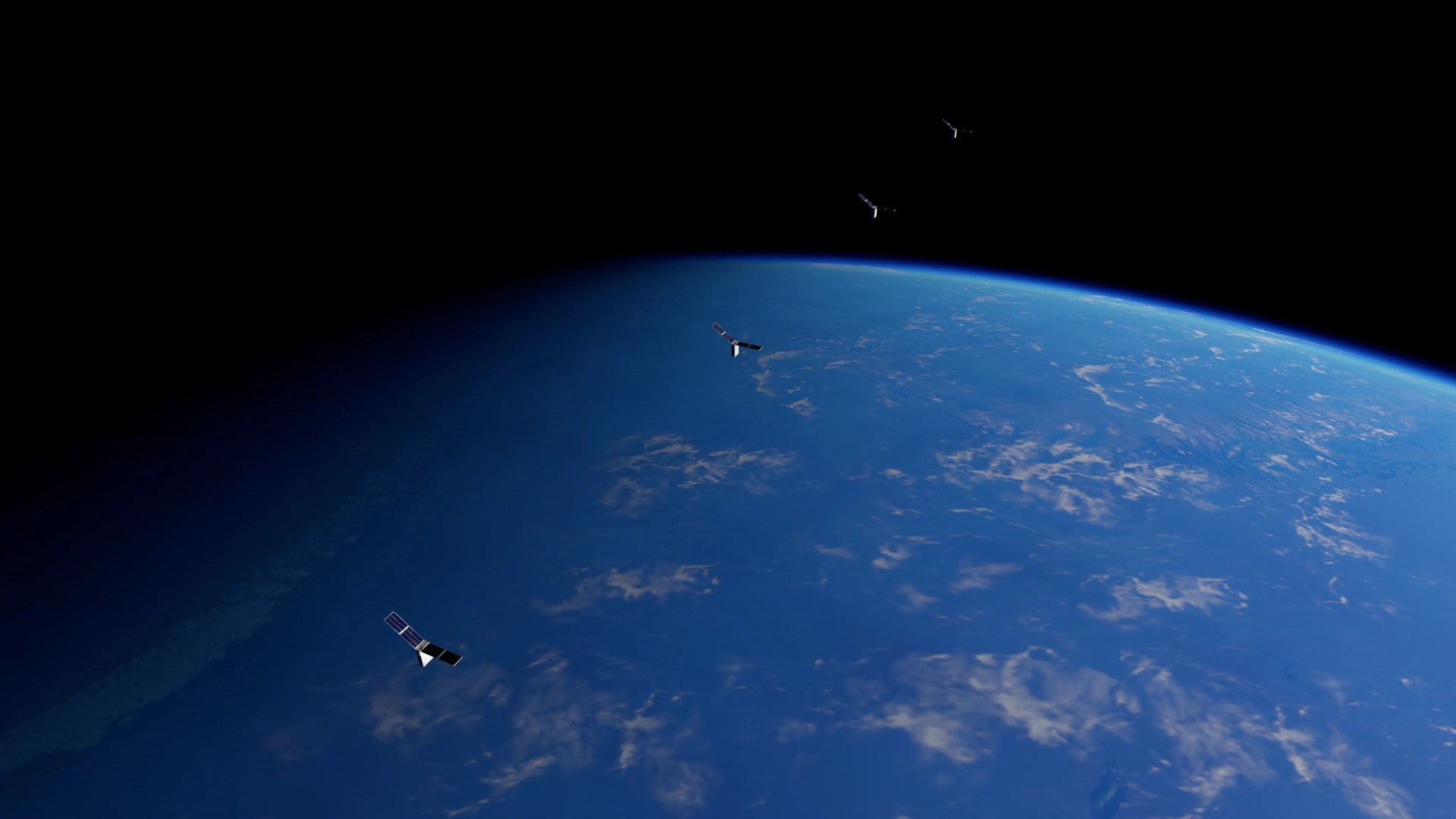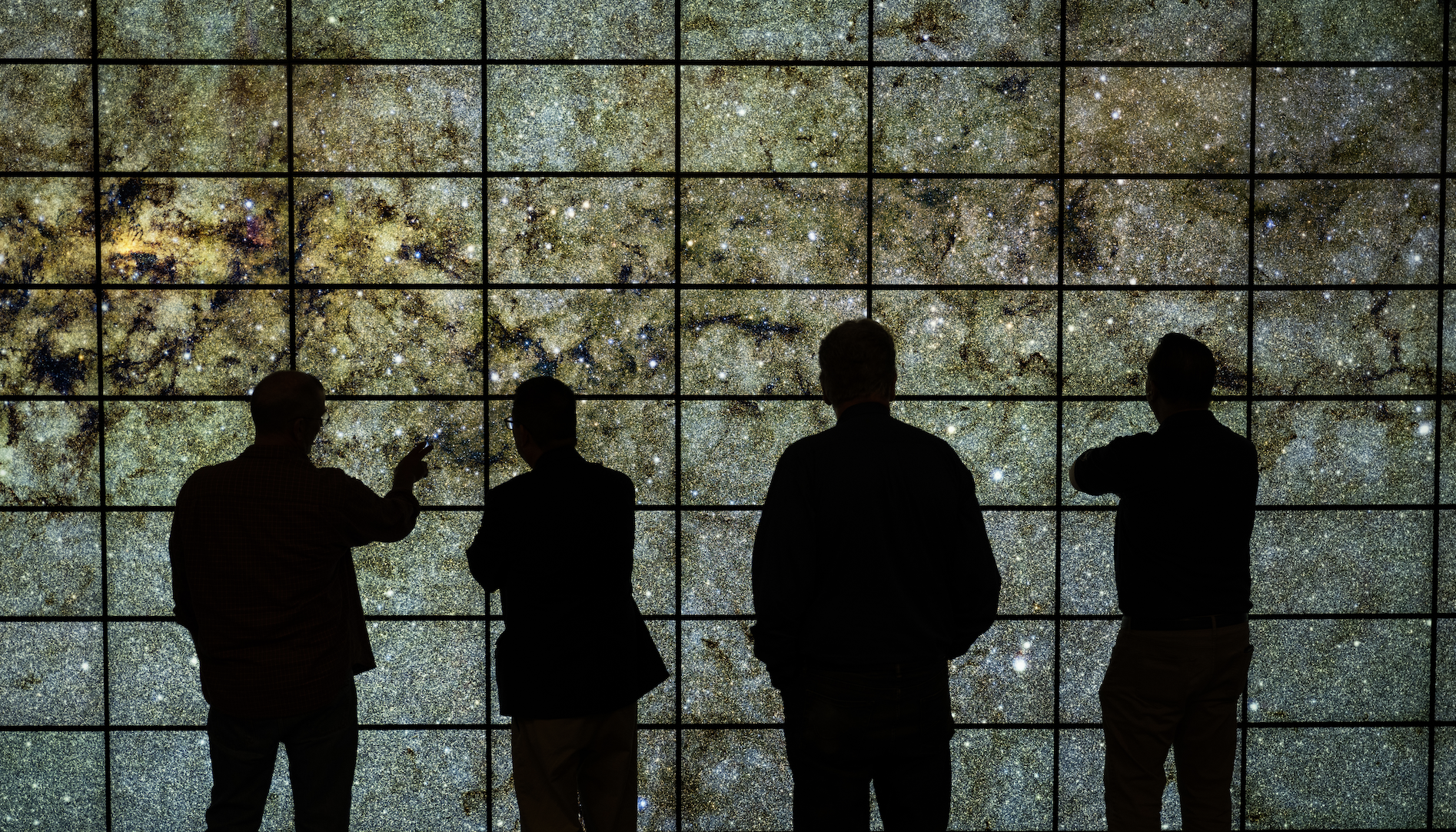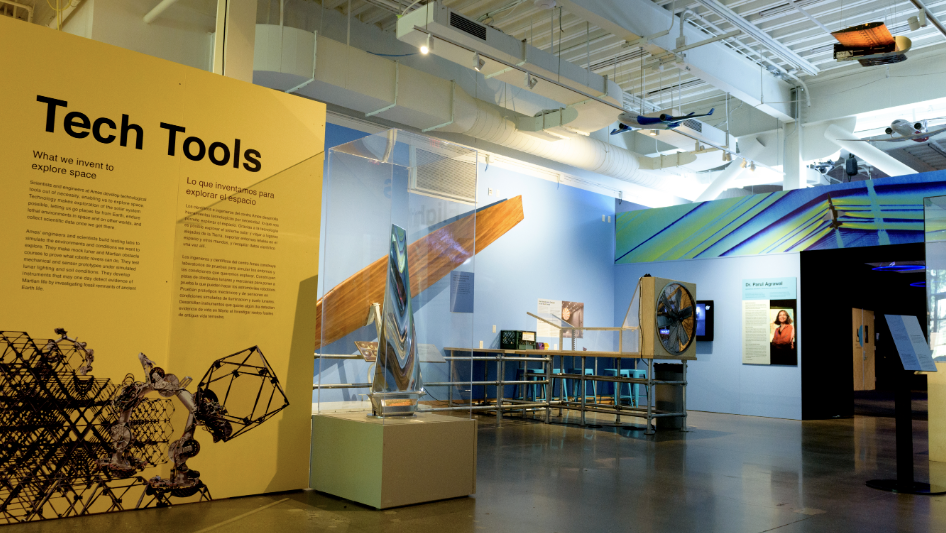NASA to Cover Two Spacewalks, Hold Preview News Conference

Two NASA astronauts will venture outside the International Space Station, conducting U.S. spacewalk 91 on Thursday, Jan. 16, and U.S. spacewalk 92 on Thursday, Jan. 23, to complete station upgrades.
NASA also will discuss the pair of upcoming spacewalks during a news conference at 2 p.m. EST Friday, Jan. 10, on NASA+ from the agency’s Johnson Space Center in Houston.
Participants in the news conference from NASA Johnson include:
- Bill Spetch, operations integration manager
- Nicole McElroy, spacewalk flight director
The first spacewalk is scheduled to begin at 7 a.m. on Jan. 16, and last about six and a half hours. NASA will provide live coverage beginning at 5:30 a.m. on NASA+.
NASA astronauts Nick Hague and Suni Williams will replace a rate gyro assembly that helps provide orientation control for the station, install patches to cover damaged areas of light filters for an X-ray telescope called NICER (Neutron star Interior Composition Explorer), and replace a reflector device used for navigational data on one of the international docking adapters. Additionally, the pair will check access areas and connector tools that will be used for future maintenance work on the Alpha Magnetic Spectrometer.
Hague will serve as spacewalk crew member 1 and will wear a suit with red stripes. Williams will serve as spacewalk crew member 2 and will wear an unmarked suit. This will be the fourth for Hague and the eighth for Williams. It will be the 273rd spacewalk in support of space station assembly, maintenance, and upgrades.
The second spacewalk is scheduled to begin at 7 a.m. on Jan. 23, and last about six and a half hours. NASA will provide live coverage beginning at 5:30 a.m. on NASA+.
Astronauts will remove a radio frequency group antenna assembly from the station’s truss, collect samples of surface material for analysis from the Destiny laboratory and the Quest airlock to see whether microorganisms may exist on the exterior of the orbital complex, and prepare a spare elbow joint for the Canadarm2 robotic arm in the event it is needed for a replacement.
Following completion of U.S. spacewalk 91, NASA will name the participating crew members for U.S. spacewalk 92. It will be the 274th spacewalk in support of space station assembly, maintenance, and upgrades.
NASA Ames Astrogram- highlights from NASA Ames Research Center in 2024
December 20th, 2024

Researchers at Ames were part of the team tasked to better understand and identify the root cause of the unexpected char loss across the Artemis I Orion spacecraft’s heat shield. Using Avcoat material response data from Artemis I, the investigation team was able to replicate the Artemis I entry trajectory environment — a key part of understanding the cause of the issue — inside the arc jet facilities at NASA Ames.
Starling Swarm Completes Primary Mission
After ten months in orbit, the Starling spacecraft swarm successfully demonstrated its primary mission’s key objectives, representing significant achievements in the capability of swarm configurations in low Earth orbit, including distributing and sharing important information and autonomous decision making.
Another Step Forward for BioNutrients
NASA’s BioNutrients entered its fifth year in its mission to investigate how microorganisms can produce on-demand nutrients for astronauts during long-duration space missions. Keeping astronauts healthy is critical and as the project comes to a close, researchers have processed production packs on Earth on the same day astronauts processed production packs in space on the International Space Station to demonstrate that NASA can produce nutrients after at least five years in space, providing confidence it will be capable of supporting crewed missions to Mars.
Hyperwall Upgrade Helps Scientists Interpret Big Data
Ames upgraded its powerful hyperwall system, a 300-square foot wall of LCD screens with over a billion pixels to display supercomputer-scale visualizations of the very large datasets produced by NASA supercomputers and instruments. The hyperwall is just one-way researchers can utilize NASA’s high-end computing technology to better understand their data and advance the agency’s missions and research.
Ames Contributions to NASA Artificial Intelligence Efforts

Ames contributes to the agency’s artificial intelligence work through ongoing research and development, agencywide collaboration, and communications efforts. This year, NASA announced David Salvagnini as its inaugural chief artificial intelligence officer and held the first agencywide town hall on artificial intelligence sharing how the agency is safely using and developing artificial intelligence to advance missions and research.
Advanced Composite Solar Sail System Successfully Launches, Deploys Sail
NASA’s Advanced Composite Solar Sail System successfully launched from Māhia, New Zealand, in April, and successfully deployed its sail in August to begin mission operations. The small satellite represents a new future in solar sailing, using lightweight composite booms to support a reflective polymer sail that uses the pressure of sunlight as propulsion.
Understanding Our Planet
In 2024, Ames researchers studied Earth’s oceans and waterways from multiple angles – from supporting NASA’s Plankton, Aerosol, Cloud, ocean Ecosystem, or PACE, mission to bringing students in Puerto Rico experiences in oceanography and the preservation of coral reefs. Working with multiple partners, our scientists and engineers helped inform ecosystem management by joining satellite measurements of Earth with animal tracking data. In collaboration with the U.S. Geological Survey, a NASA team continued testing a specialized instrument package to stay in-the-know about changes in river flow rates.
Revealing the Mysteries of Asteroids in Our Solar System
Ames researchers used a series of supercomputer simulations to reveal a potential new explanation for how the moons of Mars may have formed: The first step, the findings say, may have involved the destruction of an asteroid.
Using NASA’s powerful James Webb Space Telescope, another Ames scientist helped reveal the smallest asteroids ever found in the main asteroid belt.
Ames Helps Emerging Space Companies ‘Take the Heat’
A heat shield material invented and made at Ames helped to safely return a spacecraft containing the first product processed on an autonomous, free-flying, in-space manufacturing platform. February’s re-entry of the spacecraft from Varda Space Industries of El Segundo, California, in partnership with Rocket Lab USA of Long Beach, California, marked the first time a NASA-manufactured thermal protection material, called C-PICA (Conformal Phenolic Impregnated Carbon Ablator), ever returned from space.
Team Continues to Move Forward with Mission to Learn More about Our Star
HelioSwarm’s swarm of nine spacecraft will provide deeper insights into our universe and offer critical information to help protect astronauts, satellites, and communications signals such as GPS. The mission team continues to work toward launching in 2029.
CAPSTONE Continues to Chart a New Path Around the Moon

The microwave sized CubeSat, CAPSTONE, continues to fly in a cis-lunar near rectilinear halo orbit after launching in 2022. Flying in this unique orbit continues to pave the way for future spacecraft and Gateway, a Moon-orbiting outpost that is part of NASA’s Artemis campaign, as the team continues to collect data.
NASA Moves Drone Package Delivery Industry Closer to Reality

NASA’s uncrewed aircraft system traffic management concepts paved the way for newly-approved package delivery drone flights in the Dallas area.
NASA’s uncrewed aircraft system traffic management concepts paved the way for newly-approved package delivery drone flights in the Dallas area.
NASA Technologies Streamline Air Traffic Management Systems

Managing our busy airspace is a complex and important issue, ensuring reliable and efficient movement of commercial and public air traffic as well as autonomous vehicles. NASA, in partnership with AeroVironment and Aerostar, demonstrated a first-of-its-kind air traffic management concept that could pave the way for aircraft to safely operate at higher altitudes. The agency also saw continued fuel savings and reduction in commercial flight delays at Dallas Fort-Worth Airport, thanks to a NASA-developed tool that allows flight coordinators to identify more efficient, alternative takeoff routes.
Small Spacecraft Gathers Big Solar Storm Data from Deep Space
BioSentinel – a small satellite about the size of a cereal box – is currently more than 30 million miles from Earth, orbiting our Sun. After launching aboard NASA’s Artemis I more than two years ago, BioSentinel continues to collect valuable information for scientists trying to understand how solar radiation storms move through space and where their effects – and potential impacts on life beyond Earth – are most intense. In May 2024, the satellite was exposed to a coronal mass ejection without the protection of our planet’s magnetic field and gathered measurements of hazardous solar particles in deep space during a solar storm.
NASA, FAA Partner to Develop New Wildland Fire Technologies
NASA researchers continued to develop and test airspace management technologies to enable remotely-piloted aircraft to fight and monitor wildland fires 24 hours a day.
The Advanced Capabilities for Emergency Response Operations (ACERO) project seeks to use drones and advanced aviation technologies to improve wildland fire coordination and operations.
NASA and Forest Service Use Balloon to Help Firefighters Communicate

The Strategic Tactical Radio and Tactical Overwatch (STRATO) technology is a collaborative effort to use high-altitude balloons to improve real-time communications among firefighters battling wildland fires. Providing cellular communication from above can improve firefighter safety and firefighting efficiency.
A Fully Reimagined Visitor Center
The NASA Ames Visitor Center at Chabot Space & Science Center in Oakland, California includes a fully reimagined 360-degree experience, featuring new exhibits, models, and more. An interactive exhibit puts visitors in the shoes of a NASA Ames scientist, designing and testing rovers, planes, and robots for space exploration.
Ames Collaborations in the Community

NASA astronauts, scientists, and researchers, and leadership from the University of California, San Francisco (UCSF) met with cancer patients and gathered in a discussion about potential research opportunities and collaborations as part of President Biden and First Lady Jill Biden’s Cancer Moonshot initiative on Oct. 4. During the visit with patients, NASA astronaut Yvonne Cagle and former astronaut Kenneth Cockrell answered questions about spaceflight and life in space.
Ames and the University of California, Berkeley, expanded their partnership, organizing workshops to exchange on their areas of technical expertise, including in Advanced Air Mobility, and to develop ideas for the Berkeley Space Center, an innovation hub proposed for development at Ames’ NASA Research Park. Under a new agreement, NASA also will host supercomputing resources for UC Berkeley, supporting the development of novel computing algorithms and software for a wide variety of scientific and technology areas.
NASA’s Ames Research Center Celebrates 85 Years of Innovation
by Rachel Hoover
Ames Research Center in California’s Silicon Valley pre-dates a lot of things. The center existed before NASA – the very space and aeronautics agency it’s a critical part of today. And of all the marvelous advancements in science and technology that have fundamentally changed our lives over the last 85 years since its founding, one aspect has remained steadfast; an enduring commitment to what’s known by some on-center simply as, “an atmosphere of freedom.”
NASA’s Webb Finds Planet-Forming Disks Lived Longer in Early Universe
December 16th, 2024
NASA’s James Webb Space Telescope just solved a conundrum by proving a controversial finding made with the agency’s Hubble Space Telescope more than 20 years ago.
In 2003, Hubble provided evidence of a massive planet around a very old star, almost as old as the universe. Such stars possess only small amounts of heavier elements that are the building blocks of planets. This implied that some planet formation happened when our universe was very young, and those planets had time to form and grow big inside their primordial disks, even bigger than Jupiter. But how? This was puzzling.
To answer this question, researchers used Webb to study stars in a nearby galaxy that, much like the early universe, lacks large amounts of heavy elements. They found that not only do some stars there have planet-forming disks, but that those disks are longer-lived than those seen around young stars in our Milky Way galaxy.
“With Webb, we have a really strong confirmation of what we saw with Hubble, and we must rethink how we model planet formation and early evolution in the young universe,” said study leader Guido De Marchi of the European Space Research and Technology Centre in Noordwijk, Netherlands.

A Different Environment in Early Times
In the early universe, stars formed from mostly hydrogen and helium, and very few heavier elements such as carbon and iron, which came later through supernova explosions.
“Current models predict that with so few heavier elements, the disks around stars have a short lifetime, so short in fact that planets cannot grow big,” said the Webb study’s co-investigator Elena Sabbi, chief scientist for Gemini Observatory at the National Science Foundation’s NOIRLab in Tucson. "But Hubble did see those planets, so what if the models were not correct and disks could live longer?"
To test this idea, scientists trained Webb on the Small Magellanic Cloud, a dwarf galaxy that is one of the Milky Way’s nearest neighbors. In particular, they examined the massive, star-forming cluster NGC 346, which also has a relative lack of heavier elements. The cluster served as a nearby proxy for studying stellar environments with similar conditions in the early, distant universe.
Hubble observations of NGC 346 from the mid 2000s revealed many stars about 20 to 30 million years old that seemed to still have planet-forming disks around them. This went against the conventional belief that such disks would dissipate after 2 or 3 million years.
“The Hubble findings were controversial, going against not only empirical evidence in our galaxy but also against the current models,” said De Marchi. “This was intriguing, but without a way to obtain spectra of those stars, we could not really establish whether we were witnessing genuine accretion and the presence of disks, or just some artificial effects.”
Now, thanks to Webb’s sensitivity and resolution, scientists have the first-ever spectra of forming, Sun-like stars and their immediate environments in a nearby galaxy.
“We see that these stars are indeed surrounded by disks and are still in the process of gobbling material, even at the relatively old age of 20 or 30 million years,” said De Marchi. “This also implies that planets have more time to form and grow around these stars than in nearby star-forming regions in our own galaxy.”
Image B: Protoplanetary Disks in NGC 346 Spectra (NIRSpec)

On the right is the comparison of the top and bottom lines. This comparison shows a large peak in the cold molecular hydrogen coming from the star but not its nebular environment. Also, atomic hydrogen shows a larger peak from the star. This indicates the presence of a protoplanetary disk immediately surrounding the star. The data was taken with the microshutter array on the James Webb Space Telescope's NIRSpec (Near-Infrared Spectrometer) instrument.
A New Way of Thinking
This finding refutes previous theoretical predictions that when there are very few heavier elements in the gas around the disk, the star would very quickly blow away the disk. So the disk’s life would be very short, even less than a million years. But if a disk doesn't stay around the star long enough for the dust grains to stick together and pebbles to form and become the core of a planet, how can planets form?
The researchers explained that there could be two distinct mechanisms, or even a combination, for planet-forming disks to persist in environments scarce in heavier elements.
First, to be able to blow away the disk, the star applies radiation pressure. For this pressure to be effective, elements heavier than hydrogen and helium would have to reside in the gas. But the massive star cluster NGC 346 only has about ten percent of the heavier elements that are present in the chemical composition of our Sun. Perhaps it simply takes longer for a star in this cluster to disperse its disk.
The second possibility is that, for a Sun-like star to form when there are few heavier elements, it would have to start from a larger cloud of gas. A bigger gas cloud will produce a bigger disk. So there is more mass in the disk and therefore it would take longer to blow the disk away, even if the radiation pressure were working in the same way.
“With more matter around the stars, the accretion lasts for a longer time,” said Sabbi. "The disks take ten times longer to disappear. This has implications for how you form a planet, and the type of system architecture that you can have in these different environments. This is so exciting.”
The science team’s paper appears in the Dec. 16 issue of The Astrophysical Journal.














